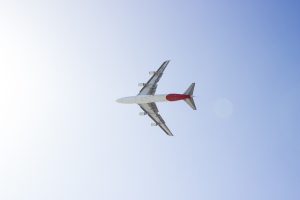
Have you heard of absolute ceiling? Not to be confused with service ceiling, it’s something that all pilots must consider. Different airplanes, however, have different absolute ceilings. What is absolute ceiling exactly, and why is it important?
Overview of Absolute Ceiling
In the aviation industry, the term “absolute ceiling” refers to the highest altitude at which an airplane can fly while maintaining sufficient lift at maximum thrust. In other words, it’s the highest an airplane can fly under standard atmospheric conditions.
Larger airplanes typically have a higher absolute ceiling than smaller airplanes. A Cessna 172,for example, has an absolute ceiling of around 14,000 feet. Cessna 172 can safely ascend up to 14,000 feet while maintaining sufficient lift. If they attempt to climb higher than this limit, they will fall back to their absolute ceiling of 14,000 feet.
While airplanes can technically fly at their absolute ceiling, it comes with challenges. The reduced air density can hinder engine cooling. Engines can’t cool as quickly at the airplane’s absolute efficiency, which can lead to overheating. Therefore, pilots must use caution when approaching the airplane’s absolute ceiling.
Why Absolute Ceiling Is Important
Absolute ceiling is important for safety and efficiency reasons. Engineers take into account absolute ceiling when designing aircraft.
Commercial aircraft, for instance, typically fly at an altitude of about 35,000 feet. The air is thinner at this altitude, so there’s less resistance. The end result is more efficient commercial flights that consume less fuel. Engineers, however, must design commercial aircraft so that they can achieve a cruising altitude of 35,000 feet while maintaining sufficient lift.
All airplanes have an absolute ceiling, including military jets. Military jets often fly at an even higher altitude than their commercial counterparts. As a result, they must be designed with a higher absolute ceiling.
Absolute Ceiling vs Service Ceiling
They may sound similar, but absolute ceiling and service ceiling aren’t the same. As previously mentioned, absolute ceiling is the maximum altitude at which an airplane can fly. Service ceiling, on the other hand, is the altitude at which an airplane can fly while climbing at a rate of 100 feet per minute. Airplanes always have a lower service ceiling than their absolute ceiling.
In Conclusion
Pilots must be conscious of the airplane’s absolute ceiling. It’s the predefined altitude limit at which an airplane can safely fly while maintaining sufficient lift.



